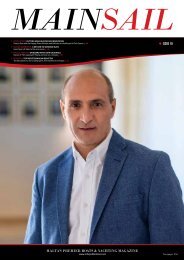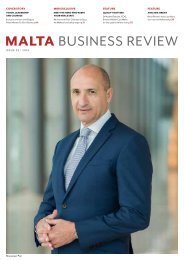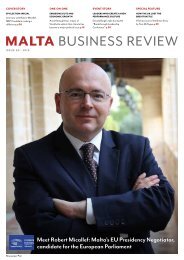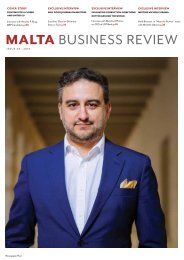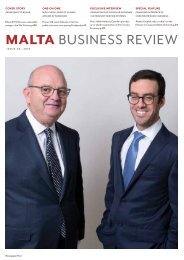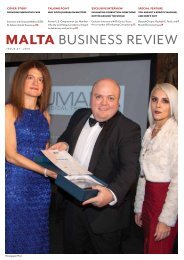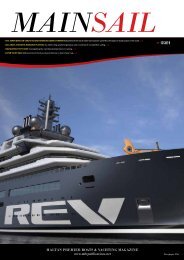You also want an ePaper? Increase the reach of your titles
YUMPU automatically turns print PDFs into web optimized ePapers that Google loves.
COVER RESEARCH <strong>ST</strong>ORY & EDUCATION<br />
INTERVIEW<br />
How Europe flies<br />
One of the fields from which the European Union can<br />
benefit is definitively research and technological<br />
development. For example, within the European<br />
aeronautical sector, the current level of innovation<br />
would not exist without the close cooperation between the<br />
best companies in this sector and the support of the European<br />
institutions. European aeronautical innovation, which in this<br />
case comes with the name Clean Sky: the EU's flagship<br />
program, fostering advanced technologies.<br />
parts of an aircraft, will grow more and more. "The engine<br />
architecture, its configuration, will necessarily also influence<br />
the aircraft architecture in order to pursue objectives such as<br />
performance improvement or lighter components. In addition,<br />
combustion efficiency, which means lower fuel consumption,<br />
will take us increasingly in the direction of hybrid, or even fully<br />
electric, solutions."<br />
Ron Van Manen is the leader of the Clean Sky 2 Research<br />
Programs: the second edition of the platform that includes all<br />
the major aviation projects and research and development<br />
initiatives. Speaking from the Clean Sky exhibit area at the last<br />
Farnborough air show, Van Manen has no doubts about where<br />
the priorities lie within the projects. "There are no compromises,<br />
flight safety is paramount, and all aeronautical research must<br />
start from this premise".<br />
Starting from this primary theme, Van Manen proceeds<br />
to list the other major European research projects aimed at<br />
improving the future of air traffic in every respect. "When we<br />
talk about European research, the focus is on new engine and<br />
aircraft configurations, new materials and eco-sustainability.<br />
For example, we are studying and developing new ways to<br />
increase the volume of air that aircraft engines use to generate<br />
thrust, or to improve their aerodynamic efficiency, also aiming<br />
to reduce noise. Because, in the future, take-off and landing will<br />
increasingly take place in urbanized areas."<br />
Van Manen says that this is a very exciting time for research,<br />
given the number and diversity of projects up and running, and<br />
that the importance of the engine, considering all the constituent<br />
"Developing conventional turboprop and turbofan engines<br />
to achieve determinate levels of efficiency requires radical<br />
solutions in terms of engine architecture. That's why we have<br />
been investing heavily in research and development of new<br />
architectures for years: to consolidate our position among the<br />
aeronautics leaders of the future," says Enrico Casale, Head of<br />
Programs for the Introduction of New Technologies at Avio Aero.<br />
"Research activities in this field have a very high economic<br />
weight, often unsustainable for some companies: for example,<br />
an aircraft engine’s life cycle is 5 or 6 times longer than that of a<br />
car, as well as requirements and certifications facilities are way<br />
more expensive".<br />
Conitnued on pg 15<br />
11




